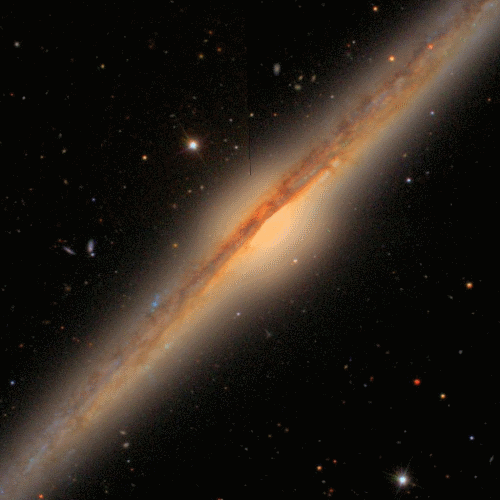MINNEAPOLIS / ST. PAUL (09/23/2013) — More than 83,000 volunteer citizen scientists. Over 16 million galaxy classifications. Information on more than 300,000 galaxies. This is what you get when you ask the public for help in learning more about our universe.
The project, named Galaxy Zoo 2, is the second phase of a crowdsourcing effort to categorize galaxies in our universe. Researchers say computers are good at automatically measuring properties such as size and color of galaxies, but more challenging characteristics, such as shape and structure, can currently only be determined by the human eye.
An international group of researchers, led by the University of Minnesota, has just produced a catalog of this new galaxy data. This catalog is 10 times larger than any previous catalog of its kind. It is available online at data.galaxyzoo.org, and a paper describing the project and data was published today in the Monthly Notices of the Royal Astronomical Society.
View examples of images categorized by citizen scientists at http://media.cse.umn.edu/index.php/player/view/oRpOBZuwfK.
"This catalog is the first time we’ve been able to gather this much information about a population of galaxies," said Kyle Willett, a physics and astronomy postdoctoral researcher in the University of Minnesota’s College of Science and Engineering and the paper’s lead author. "People all over the world are beginning to examine the data to gain a more detailed understanding of galaxy types."
Between Feb. 2009 and April 2010, more than 83,000 Galaxy Zoo 2 volunteers from around the world looked at images online gathered from the Sloan Digital Sky Survey. They answered questions about the galaxy, including whether it had spirals, the number of spiral arms present, or if it had galactic bars, which are long extended features that represent a concentration of stars. Each image was classified an average of 40-45 times to ensure accuracy. More than 16 million classifications of more than 300,000 galaxies were gathered representing about 57 million computer clicks.
When volunteers were asked why they got involved in the project, the most common answer was because they enjoyed contributing to science. Researchers estimate that the effort of the volunteers on this project represents about 30 years of full-time work by one researcher.
"With today’s high-powered telescopes, we are gathering so many new images that astronomers just can’t keep up with detailed classifications," said Lucy Fortson, a professor of physics and astronomy in the University of Minnesota’s College of Science and Engineering and one of the co-authors of the research paper. "We could never have produced a data catalog like this without crowdsourcing help from the public."
Fortson said Galaxy Zoo 2 is similar to a census of the galaxies. With this new catalog, researchers now have a snapshot of the different types of galaxies as they are today. The next catalog will tell us about galaxies in the distant past. The catalogs together will let us understand how our universe is changing.
To help create the next catalog, volunteer citizen scientists continue to be needed for the project. To participate, visit www.galaxyzoo.org. No special skills are needed, and volunteers can start classifying galaxies and helping the scientists within minutes of going to the website.
In addition to Fortson and Willett, other authors of the research paper include Chris Lintott, Oxford Astrophysics and Adler Planetarium; Steven Bamford, University of Nottingham; Karen Masters, Robert Nichol and Daniel Thomas, University of Portsmouth and South East Physics Network; Brooke Simmons and Robert Simpson, Oxford Astrophysics; Kevin Casteels, University of Barcelona; Edward Edmondson and Thomas Melvin, University of Portsmouth; Sugata Kaviraj, Oxford Astrophysics and University of Hertfordshire; William Keel, University of Alabama; M. Jordan Raddick, Johns Hopkins University; Kevin Schawinski, ETH Zurich; Ramin Skibba, University of California, San Diego; and Arfon Smith, Adler Planetarium.
The research was funded primarily by the National Science Foundation and the Leverhulme Trust. Galaxy Zoo is one of the many online citizen science projects made available by the Zooniverse.org team.
To read the full research paper entitled "Galaxy Zoo 2: detailed morphological classifications for 304,122 galaxies from the Sloan Digital Sky Survey," visit the Monthly Notices of the Royal Astronomical Society website.
Related Links
Galaxy Zoo: http://www.galaxyzoo.org/
College of Science and Engineering: http://cse.umn.edu/index.php













